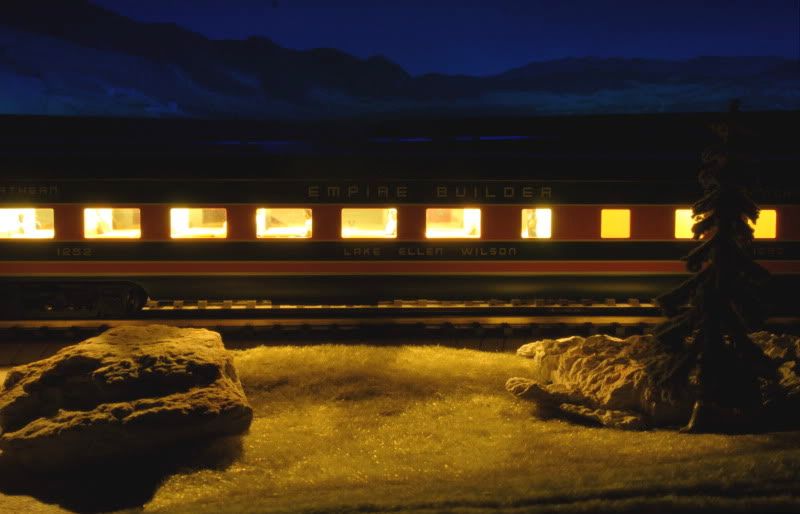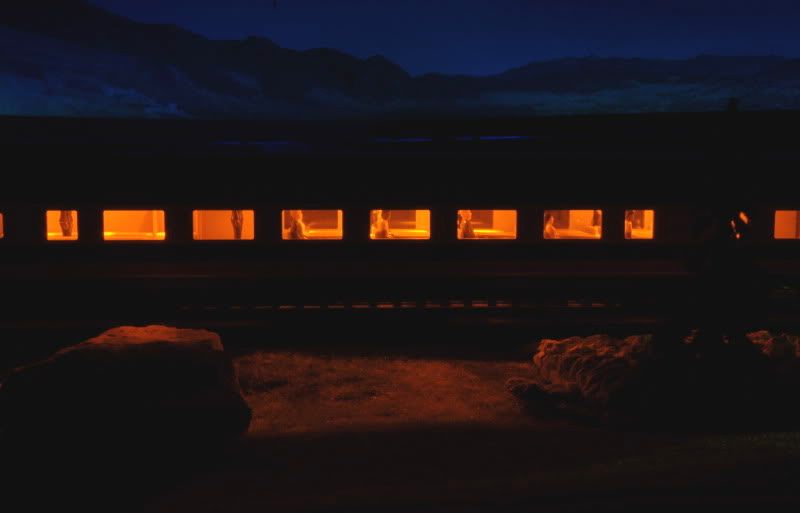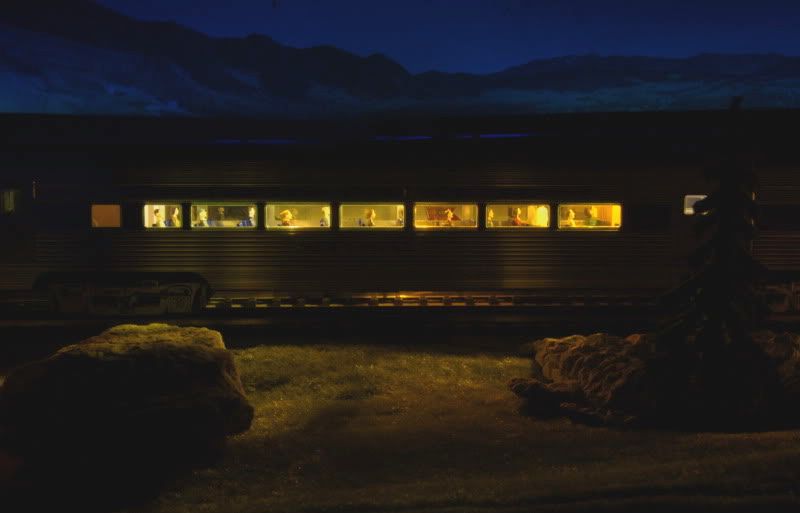Like a lot of people, the owner of the NorthWest Trunk Lines, Peter Hambling, has a thing for K-Line 21" passenger cars. It's an easy thing to understand when you watch a string of 11 GN Empire Builder cars gliding around a broad curve.

One of the only down sides to a consist like this is that the K-Line passenger cars are VERY power hungry. We tested the GN set above and found that the car lighting drew 5.18 amps at 18 volts. If you have two such trains on the same power supply with four motor diesel sets with smoke it can be a real problem. So, it became obvious we needed to do something to cut down the power consumption. I looked around at various LED lighting conversion kits and didn't find any that I really liked. Some used yellow LED's, which just didn't look right. Others used bluish white LED's. They looked a little better, but still not quite right. Warm white LED's seemed to be the answer, but I couldn't find anyone offering pre-assembled kits with warm white LED's.
That's when I met Jack Pearce. For those who have visited the York show, Jack is the guy who displays in the Orange Hall who sells fire engines, police cars, ambulances, etc., fully decked out with LED's flashing like the real thing. Jack originally was selling a very nice lighting board assembly, but it had yellow LED's. After talking with Jack he agreed to let me spec out a different warm white LED to be used on his next batch of lighting boards. After a LOT of testing and tuning we settled on a very efficient LED from Seoul Semiconductor. The Empire Builder cars are one of the first sets we've converted and I couldn't be happier with the results.

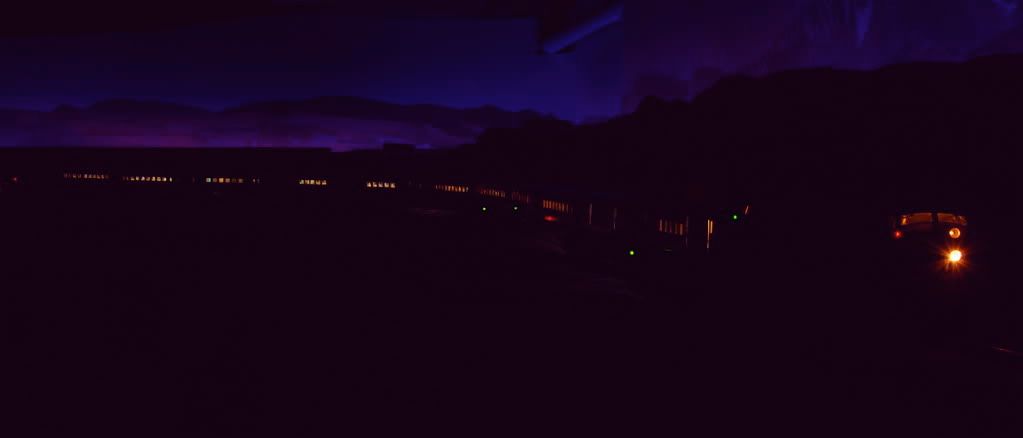
One of the nice things about Jack's boards is that you can adjust the lighting intensity to your liking with a simple resistor change. We tweaked the lighting level a little lower than most people would probably like. The light from the cars casts a little light on it surroundings but it doesn't light up the whole room. When you look in at the cars the passengers are clearly visible and not washed out by too much light.
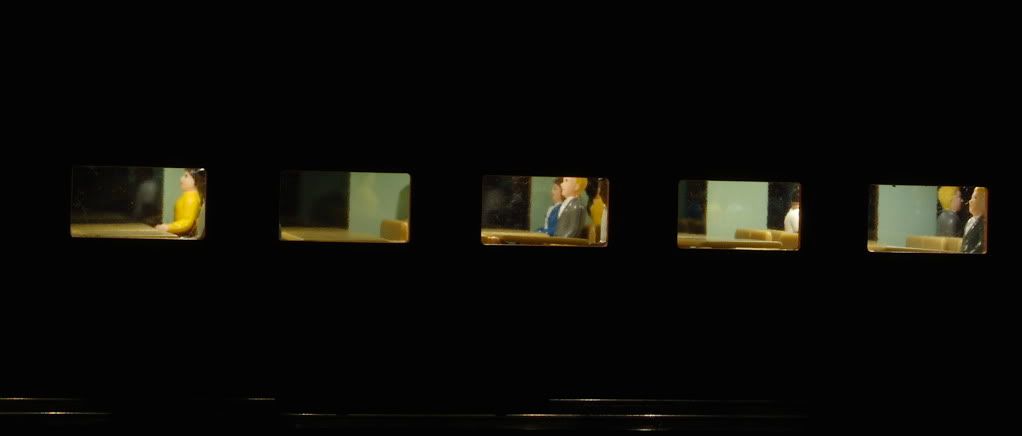
It's a bit of a balancing act because you still want the lighting to be visible when the layout lighting is turned up.
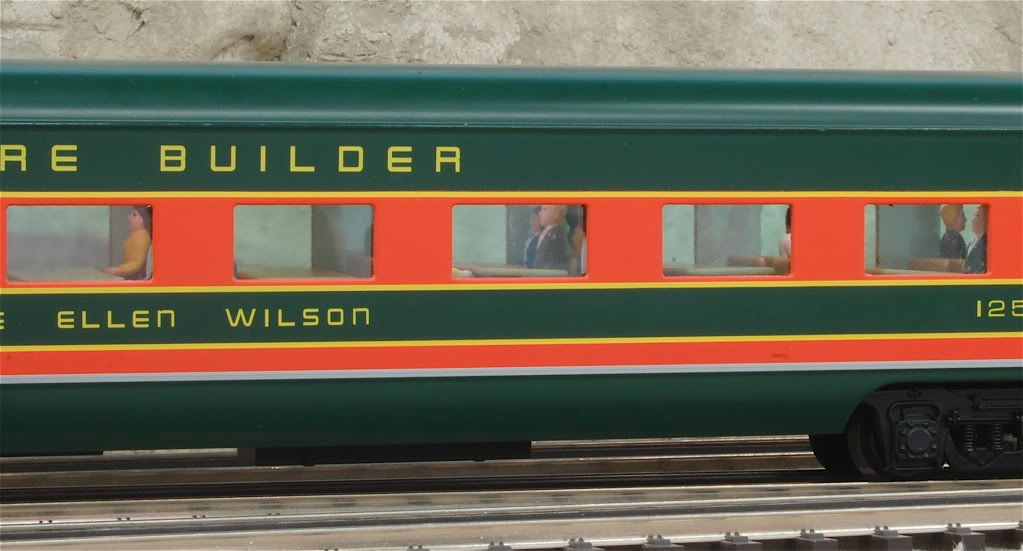
The real test, of course, was to see what the current draw would be after conversion. The results were a STUNNING success. The GN consist pictured above now draws just 20mA. Not 20mA per car, 20mA TOTAL! This was tested and triple checked with a Fluke model 78 multimeter. Each car draws just under 2mA! The whole consist now draws less current than a single K-line caboose. And, to top it off, each board has 2 1000µF capacitors, so the lighting it totally flicker free.
I bought a good chunk of Jack's production run to convert the 120+ car fleet on the NWTL but I know he has more to sell. If folks are interested I'll post some photos of the boards on Monday. Anyway, if you're looking to convert your passenger cars to LED lighting Jack's got a nice option for you to check out.




